-
 Bitcoin
Bitcoin $93,090.6111
-1.72% -
 Ethereum
Ethereum $1,770.2634
-3.12% -
 Tether USDt
Tether USDt $1.0004
-0.01% -
 XRP
XRP $2.2425
2.80% -
 BNB
BNB $601.7159
-0.39% -
 Solana
Solana $146.1992
-1.57% -
 USDC
USDC $1.0000
0.00% -
 Dogecoin
Dogecoin $0.1761
-2.04% -
 Cardano
Cardano $0.6943
-1.93% -
 TRON
TRON $0.2440
-3.92% -
 Sui
Sui $3.4577
0.21% -
 Chainlink
Chainlink $14.4216
-3.05% -
 Avalanche
Avalanche $21.3447
-5.09% -
 Stellar
Stellar $0.2813
-2.87% -
 UNUS SED LEO
UNUS SED LEO $9.0794
0.98% -
 Toncoin
Toncoin $3.2437
-2.99% -
 Hedera
Hedera $0.1881
-1.68% -
 Shiba Inu
Shiba Inu $0.0...01333
-4.24% -
 Bitcoin Cash
Bitcoin Cash $344.1649
-3.36% -
 Litecoin
Litecoin $84.6607
-2.43% -
 Polkadot
Polkadot $4.0531
-3.64% -
 Hyperliquid
Hyperliquid $17.0217
-4.79% -
 Monero
Monero $303.2314
30.62% -
 Dai
Dai $1.0001
-0.01% -
 Bitget Token
Bitget Token $4.3138
-2.95% -
 Ethena USDe
Ethena USDe $0.9995
-0.02% -
 Pi
Pi $0.6254
-3.36% -
 Pepe
Pepe $0.0...08747
-2.68% -
 Uniswap
Uniswap $5.4305
-7.93% -
 Aptos
Aptos $5.3191
-4.60%
What can PHA coins be used for? A comprehensive analysis of the application scenarios of PHA coins
PHA coins play a multifaceted role in the Phantasma ecosystem, enabling staking for rewards, facilitating transactions, powering smart contracts, fueling the NFT marketplace, and supporting the gaming ecosystem.
Oct 31, 2024 at 02:20 pm
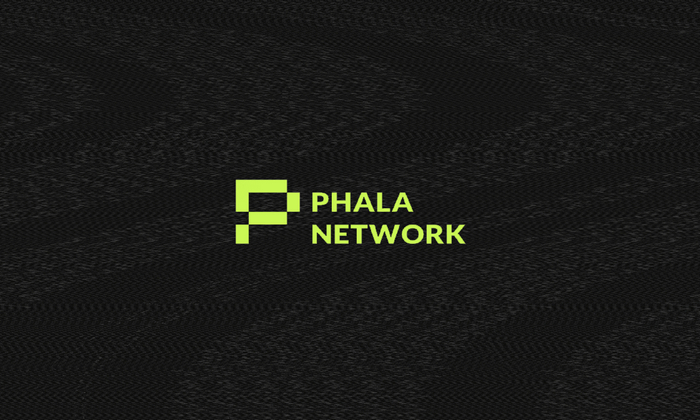
What Can PHA Coins Be Used For? A Comprehensive Analysis of PHA Coin Application Scenarios
1. Staking for Rewards:
PHA coin holders can stake their tokens on the Phantasma Chain to earn Staking Rewards. These rewards incentivize holders to participate in the network's security and operations, providing a passive income stream.
2. Network Transactions:
PHA is the native cryptocurrency of the Phantasma Chain. It is used to facilitate transactions such as sending and receiving tokens, smart contract execution, and payment of transaction fees.
3. Gas Fees:
In addition to transaction fees, PHA coins are required as "Gas" for smart contract executions and on-chain operations. Gas fees ensure the efficient and timely processing of transactions.
4. NFT Marketplace:
The Phantasma NFT Marketplace enables users to buy, sell, and trade non-fungible tokens (NFTs). PHA coins are the primary currency used for these transactions, allowing users to acquire and collect digital collectibles.
5. Gaming Ecosystem:
PHA coins are utilized in the Phantasma gaming ecosystem. They can be used to purchase in-game assets, rewards, and services, contributing to the immersive gameplay experience.
6. KCAL Token:
KCAL tokens are utility tokens used within the Phantasma ecosystem. They are primarily generated through staking PHA coins and can be used for additional benefits such as reducing transaction fees, offering voting rights, and participating in governance.
7. Exclusive Features and Services:
PHA coin holders gain access to exclusive features and services within the Phantasma ecosystem. These may include access to limited-edition content, community events, and developer tools that enhance their user experience.
8. Developer Incentives:
PHA coins incentivize developers to build and deploy applications on the Phantasma Chain. Grants and funding programs use PHA as rewards to attract top talent and foster innovation within the ecosystem.
9. External Collaborations:
Phantasma collaborates with external projects and platforms to expand the utility of PHA coins. These partnerships enable cross-chain transactions, access to cross-platform services, and broader adoption.
10. Payments and Rewards:
PHA coins can be utilized as a form of payment for subscription services, loyalty programs, and gift cards. Additionally, businesses can adopt PHA as rewards or incentives for customer engagement and loyalty.
Disclaimer:info@kdj.com
The information provided is not trading advice. kdj.com does not assume any responsibility for any investments made based on the information provided in this article. Cryptocurrencies are highly volatile and it is highly recommended that you invest with caution after thorough research!
If you believe that the content used on this website infringes your copyright, please contact us immediately (info@kdj.com) and we will delete it promptly.
- Maddie Griffin doesn't try to hide the fact that she is a numbers person
- 2025-04-28 09:20:14
- FINAL100 Expiring: $0.0002 Entry Into 2900% Moonplay—BTFD is the Next Crypto to Explode Amid Snek and Simon's Cat Hype!
- 2025-04-28 09:20:14
- Dogecoin (DOGE) Price Enters a New Bullish Phase After Flashing Trend Reversal
- 2025-04-28 09:15:12
- With the Rapid Development of Blockchain Technology, Digital Currency Mining Has Become a Popular Investment Method
- 2025-04-28 09:15:12
- BetMGM Bonus Code CUSE150: Unlock $150 Bonus or $1500 First Bet Offer
- 2025-04-28 09:10:12
- The Interplay of Crypto and Politics: New Frontiers of Influence
- 2025-04-28 09:10:12
Related knowledge

What is Ethereum’s Slashing mechanism and how to punish malicious behavior?
Feb 20,2025 at 03:08am
Key PointsOverview of slashingDifferent types of slashing in EthereumIncentives and consequences of slashingIdentifying and reporting slashed validatorsOngoing discussions and potential improvementsEthereum's Slashing Mechanism: Punishing Malicious BehaviorEthereum's slashing mechanism is an essential tool for ensuring network security and punishing mal...
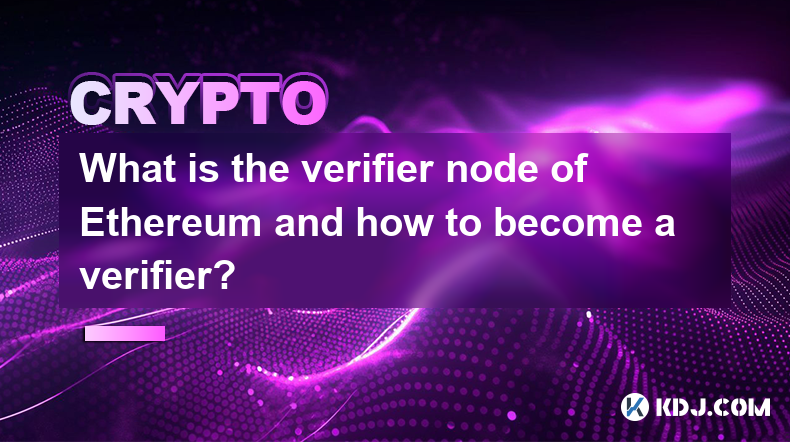
What is the verifier node of Ethereum and how to become a verifier?
Feb 19,2025 at 06:00pm
The Verifier Node of Ethereum: A Comprehensive GuideKey Points:What is a Verifier Node?How to Become a Verifier NodeResponsibilities and Rewards of a Verifier NodeMinimum Requirements for Becoming a Verifier NodePotential Difficulties in Running a Verifier Node1. What is a Verifier Node?A Verifier Node is an independent entity on the Ethereum network th...
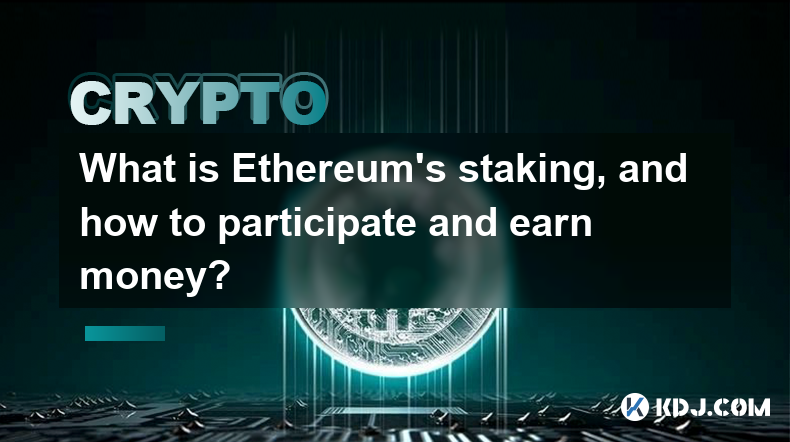
What is Ethereum’s staking, and how to participate and earn money?
Feb 19,2025 at 04:37pm
Key Points:Understanding Ethereum's Staking MechanismSteps to Participate in StakingBenefits and Rewards of StakingSecurity and Risk ConsiderationsTechnical Requirements and Hardware OptionsPotential Challenges and Troubleshooting TipsFAQs on Ethereum StakingWhat is Ethereum's Staking?Proof-of-Stake (PoS) is a consensus mechanism used in blockchain netw...
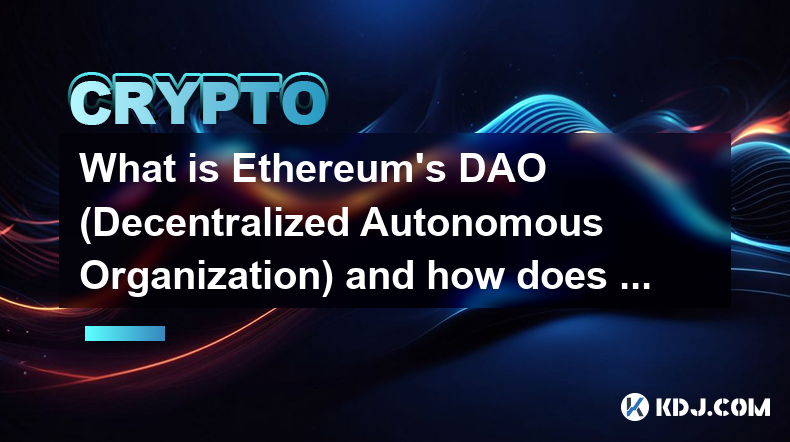
What is Ethereum’s DAO (Decentralized Autonomous Organization) and how does it work?
Feb 20,2025 at 03:12am
Key PointsDefinition and Structure of a DAOGovernance and Decision-Making in DAOsBenefits and Use Cases of DAOsChallenges and Limitations of DAOsWhat is Ethereum's DAO (Decentralized Autonomous Organization) and How Does It Work?Definition and Structure of a DAOA Decentralized Autonomous Organization (DAO) is an innovative governance and management fram...
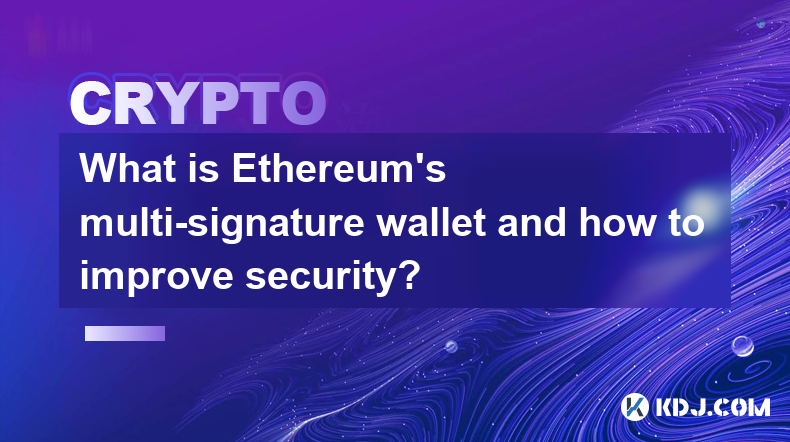
What is Ethereum's multi-signature wallet and how to improve security?
Feb 20,2025 at 02:18pm
Key Points:Understanding the Concept of a Multi-Signature WalletBenefits and Drawbacks of Multisig WalletsRequirements for Setting Up a Multisig WalletStep-by-Step Guide to Generating a Multisig WalletImplementing Strategies for Enhanced Security1. Understanding the Concept of a Multi-Signature WalletA multi-signature (multisig) wallet in the Ethereum e...
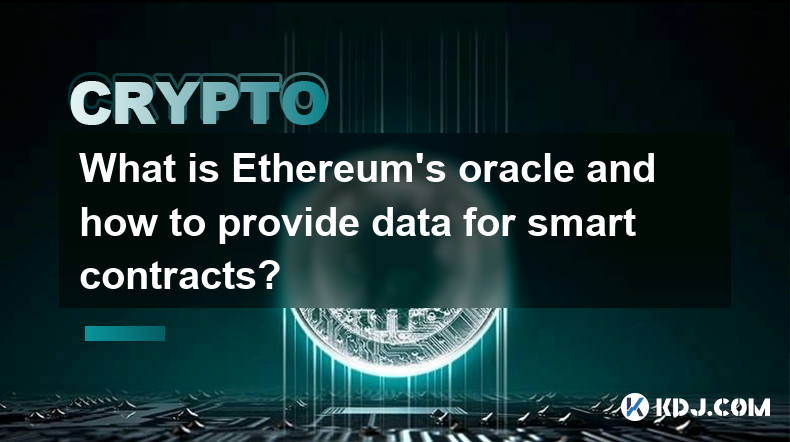
What is Ethereum's oracle and how to provide data for smart contracts?
Feb 21,2025 at 01:30am
Key Points:Understanding the concept of oracles in EthereumExploring different types of oraclesDetailed guide on how to provide data for smart contractsAddressing potential challenges and considerationsWhat is Ethereum's Oracle?Oracles are crucial components in the Ethereum ecosystem, enabling smart contracts to access real-world data and off-chain even...

What is Ethereum’s Slashing mechanism and how to punish malicious behavior?
Feb 20,2025 at 03:08am
Key PointsOverview of slashingDifferent types of slashing in EthereumIncentives and consequences of slashingIdentifying and reporting slashed validatorsOngoing discussions and potential improvementsEthereum's Slashing Mechanism: Punishing Malicious BehaviorEthereum's slashing mechanism is an essential tool for ensuring network security and punishing mal...

What is the verifier node of Ethereum and how to become a verifier?
Feb 19,2025 at 06:00pm
The Verifier Node of Ethereum: A Comprehensive GuideKey Points:What is a Verifier Node?How to Become a Verifier NodeResponsibilities and Rewards of a Verifier NodeMinimum Requirements for Becoming a Verifier NodePotential Difficulties in Running a Verifier Node1. What is a Verifier Node?A Verifier Node is an independent entity on the Ethereum network th...

What is Ethereum’s staking, and how to participate and earn money?
Feb 19,2025 at 04:37pm
Key Points:Understanding Ethereum's Staking MechanismSteps to Participate in StakingBenefits and Rewards of StakingSecurity and Risk ConsiderationsTechnical Requirements and Hardware OptionsPotential Challenges and Troubleshooting TipsFAQs on Ethereum StakingWhat is Ethereum's Staking?Proof-of-Stake (PoS) is a consensus mechanism used in blockchain netw...

What is Ethereum’s DAO (Decentralized Autonomous Organization) and how does it work?
Feb 20,2025 at 03:12am
Key PointsDefinition and Structure of a DAOGovernance and Decision-Making in DAOsBenefits and Use Cases of DAOsChallenges and Limitations of DAOsWhat is Ethereum's DAO (Decentralized Autonomous Organization) and How Does It Work?Definition and Structure of a DAOA Decentralized Autonomous Organization (DAO) is an innovative governance and management fram...

What is Ethereum's multi-signature wallet and how to improve security?
Feb 20,2025 at 02:18pm
Key Points:Understanding the Concept of a Multi-Signature WalletBenefits and Drawbacks of Multisig WalletsRequirements for Setting Up a Multisig WalletStep-by-Step Guide to Generating a Multisig WalletImplementing Strategies for Enhanced Security1. Understanding the Concept of a Multi-Signature WalletA multi-signature (multisig) wallet in the Ethereum e...

What is Ethereum's oracle and how to provide data for smart contracts?
Feb 21,2025 at 01:30am
Key Points:Understanding the concept of oracles in EthereumExploring different types of oraclesDetailed guide on how to provide data for smart contractsAddressing potential challenges and considerationsWhat is Ethereum's Oracle?Oracles are crucial components in the Ethereum ecosystem, enabling smart contracts to access real-world data and off-chain even...
See all articles























































































